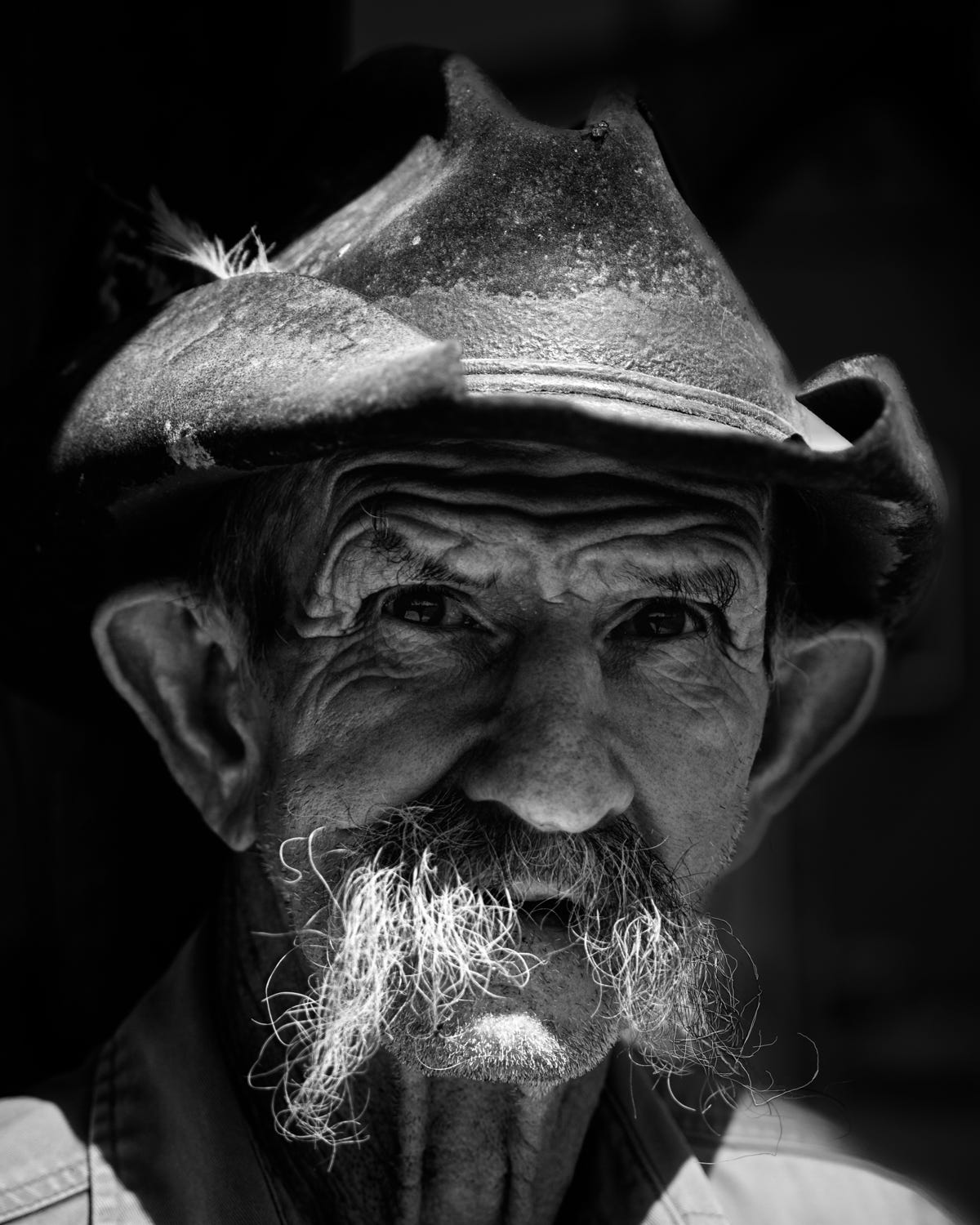The Anatomy of a Portrait
Silver Gelatin Series | The Western Lensman
They call him Festus.
Every line, a story the mountains never cared to forget.
Why Black and White Works
There’s something timeless about removing color from a portrait. It strips away distraction and leaves you with truth — form, tone, and texture. In color, our eyes jump from hue to hue. In black and white, we settle into the person. We read the light instead of the clothes, the shadows instead of the background. It becomes elemental.
That’s the reason black-and-white portraiture still sits at the top of fine art photography: it reveals character instead of decoration. Every wrinkle, every ridge of a hat, every reflection in an eye becomes language.
High Key vs. Low Key
Understanding tone is the heart of portrait work.
High Key portraits are bright, open, and airy. They use minimal shadows and soft light — think white backgrounds, gentle transitions, and a feeling of optimism or youth.
Low Key portraits, like Festus, live in the shadows. They rely on controlled light, deep blacks, and strong contrast. The feeling is introspective, cinematic, sometimes even spiritual.
Neither approach is better — they just tell different truths. The West, with its hard light and hard people, was born for low key.
Choosing a Subject
Good portrait subjects aren’t models — they’re storytellers. You know you’ve found one when you look through the viewfinder and can already feel a narrative. The lines on their face speak before they do.
When I met Festus, the light was already doing the talking. His hat, weathered and bent; his mustache catching the midday sun; eyes half in shadow — it was all there. The goal wasn’t to pose him, it was to honor him.
The Role of Light and Equipment
Light is everything. You can’t force good light — you learn to read it. In portraiture, direction and softness decide emotion. Side light sculpts the face; backlight outlines; front light reveals.
And while gear never makes the artist, a good camera matters when you’re chasing tone. High-resolution sensors like the Sony Alpha system let you pull subtle gradients from shadow to highlight without losing detail. It’s those tiny tonal shifts that make black-and-white work breathe.
The lens, the aperture, the shadows behind your subject — all of it contributes to the quiet dialogue between person and light.
Closing Thought
A portrait isn’t about likeness. It’s about presence. The moment the shutter closes, the photograph becomes less about the face in front of you and more about what it feels like to stand there with them.
That’s what makes a portrait powerful — not the perfection, but the truth that remains when everything else is gone.


